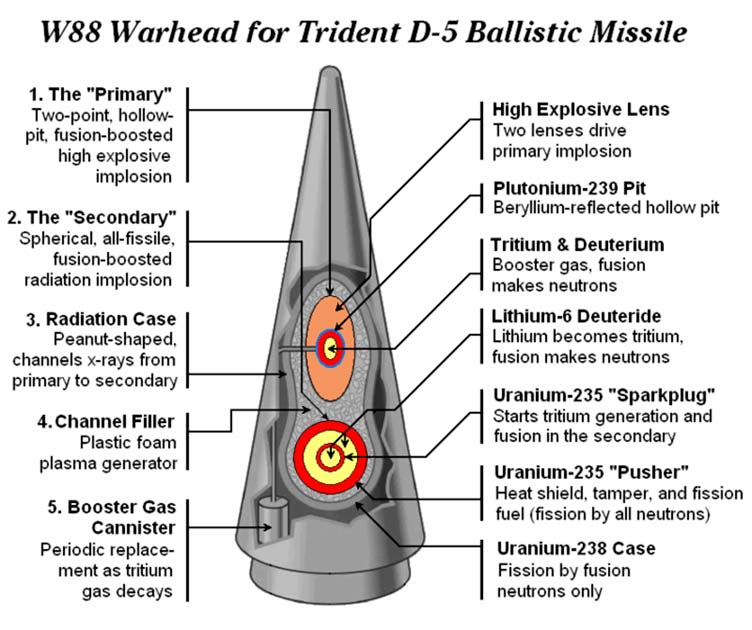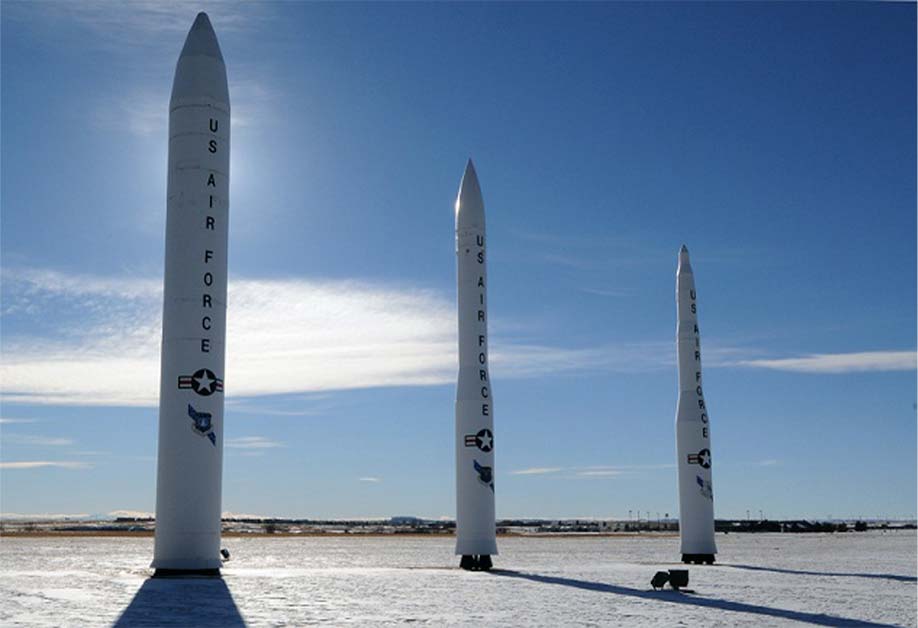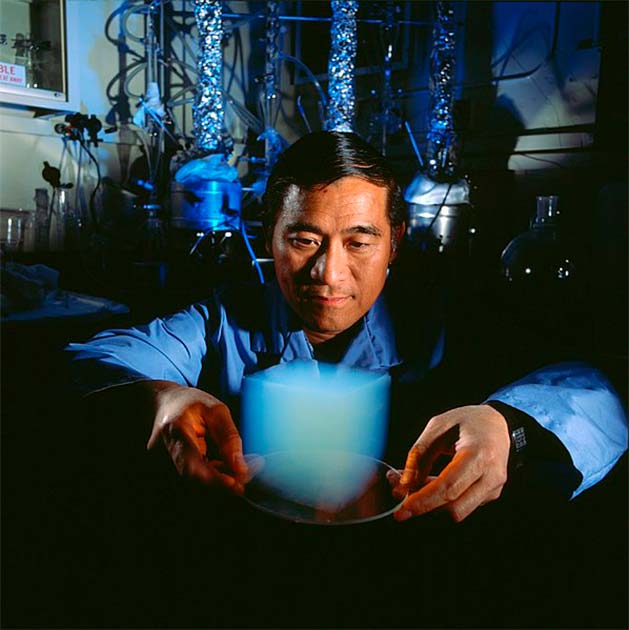In the world of nuclear weapons, there are few materials as mysterious and highly classified as Fogbank. This substance, which plays a crucial role in the design of modern thermonuclear bombs, has been the subject of intense speculation and curiosity for decades.
Despite its importance, extraordinarily little is known about the composition and properties of Fogbank, and the details of its production and use are understandably shrouded in secrecy. Amazingly, its production was so secret, the Americans actually appear to have forgotten how to make it in the early 2000s.
This is the story of Fogbank, what it is, how it was lost, and how its formula was eventually recovered.
Shhh, It’s a Secret
Want to know what Fogbank is? Unfortunately, that’s a secret. Want to know what it’s used for? Out of luck again, also a secret.
As Dennis Rudy, general manager at Oak Ridge National Laboratory (which researches nuclear science) once put it, “The material is classified. Its composition is classified. Its use in the weapon is classified, and the process itself is classified.” Officially, all we know is that Fogbank plays a vital role in the function of America’s W76, W78, and W88 nuclear warheads. What that role is, of course, is meant to be a secret.

Luckily for us, this is the U.S. government we’re talking about, so there have been leaks and slip-ups over the years. We know from Tom D’Agostino, the administrator of the NNSA (National Nuclear Security Administration) that Fogbank is something called an “interstage material.” This has led arms experts to conclude that Fogbank is an “aerogel,” a type of ultralight material that combines the qualities of a gas, a gel, and a solid.
Interstage materials play a key role in actually making nuclear weapons go boom. It’s believed in the case of Fogbank; it’s designed to trigger the fusion stage detonation after the detonation of the weapon’s fission stage by becoming a superheated plasma.
- Castle Bravo and the Shrimp: When Nuclear Testing Goes Very Wrong
- Operation Hurricane: Britain’s Desperate Bid to be Third
Essentially, the detonation of many conventional nuclear weapons happens in two stages and it’s Fogbank’s job to cause the second, bigger stage. This is an oversimplified explanation because outside of nuclear weapons labs, the intricacies of interstage materials are a closely guarded secret (thankfully).
We also know, through unclassified official documents, that Fogbank was originally manufactured in Facility 9404-11 of the Y-12 National Security Complex at Oak Ridge. It was only manufactured from 1975 until 1989 when the last of the W76 warheads were built.
Once these warheads were completed the facility was no longer needed and was shut down. All that was left was a small plant that produced the material for research and testing purposes, but this was later closed down too.
Forgetting Fogbank
Decommissioning the plant proved to be a miscalculation. One of the many problems with nuclear weapons is that they’re expensive. Expensive to research, expensive to design, and expensive to build. As such, in 1996 the US government decided to replace, refurbish, or just get rid of large chunks of its nuclear arsenal.
It was decided the best course of action was to refurbish older nuclear warheads to extend their service lives. In 2000 the NNSA announced that America’s W76 warheads would be refurbished so that they would remain viable until at least 2040.
They hit a major roadblock pretty quickly. To refurbish the W76 warheads they needed Fogbank. The problem was that due to cost-cutting, the only facility that made Fogbank had been shut down decades ago. Even worse, there were next to no records left of how to make it. Most of the staff who had worked on the project were either dead, retired, or had left the NNSA.

The NNSA had two options, manufacture a replacement interstage material or try to reverse engineer the original Fogbank. They initially settled on creating a replacement. When this proved to be fruitless (and expensive) the NNSA switched gears and decided rather than reinventing the wheel, they would try to re-create Fogbank.
The first step was to build a new production plant since the original facility had long since been decommissioned. Things did not go smoothly, and delays kept cropping up during construction. Once construction had finally been completed, the engineers discovered that producing Fogbank was no easy task.
- Whoops! How did the US Misplace Six Nuclear Bombs?
- Secrets of the Polygon: The Soviet Nuclear Testing Grounds
In March of 2007, scientists announced they had finally come up with a process for manufacturing Fogbank again. They were actually only actually halfway there, however. The material they had produced had major problems when assessed. Six months later in September 2007, the NNSA upgraded its Fogbank project to code blue, meaning it was now a major priority.
The Eureka Moment
Engineers eventually figured out what the problem was. It turned out they were being too careful. Looking back at the few surviving notes of the original team they realized they were having the same problems as their predecessors. This led to the ream discovering that the original Fogbank material had an important impurity that the “new” Fogbank did not.

The materials used to create Fogbank (which are secret) were being subjected to cleaning processes that hadn’t even existed when the original Fogbank was invented. These new cleaning processes were removing the substance that caused the needed impurity.
Once the NNSA’s scientists realized this, their problems were over. Not only could they recreate Fogbank, but they could also control the finished product’s quality much better than the original scientists (since they knew the importance of this impurity and how to manufacture it).
The new and improved Fogbank finally entered production in 2008 with the newly refurbished weapons being provided to the Navy 7 months later. It had only taken ten years to reinvent something the NNSA had forgotten how to make.
Ever since the first atomic bomb was dropped on Hiroshima in 1945 nuclear weapons have cast a cloud over humanity. For years people have sat in fear, hoping policies of “mutually assured destruction” would be enough to deter superpowers and rogue states from bombing each other.
The whole Fogbank debacle is a potent reminder that humans might not be ready to wield such levels of power. We trust our government to be responsible enough to safeguard nuclear technology so that it doesn’t fall into the wrong hands. It’s hard to believe they’re capable of this when the world’s leading superpower literally forgot how to make an important key ingredient of its nuclear arsenal.
Of course, when it comes to nuclear weapons there are no easy answers, and realistically it’s likely the weapons are here to stay. As such it’s important we learn from events like the Fogbank incident and make sure we keep our governments accountable. Mistakes like Fogbank must never be swept under the rug.
Top Image: A US Mark VII “Thor” nuclear weapon containing Fogbank, which the Americans forgot how to make. Source: Chairboy / CC BY-SA 3.0.